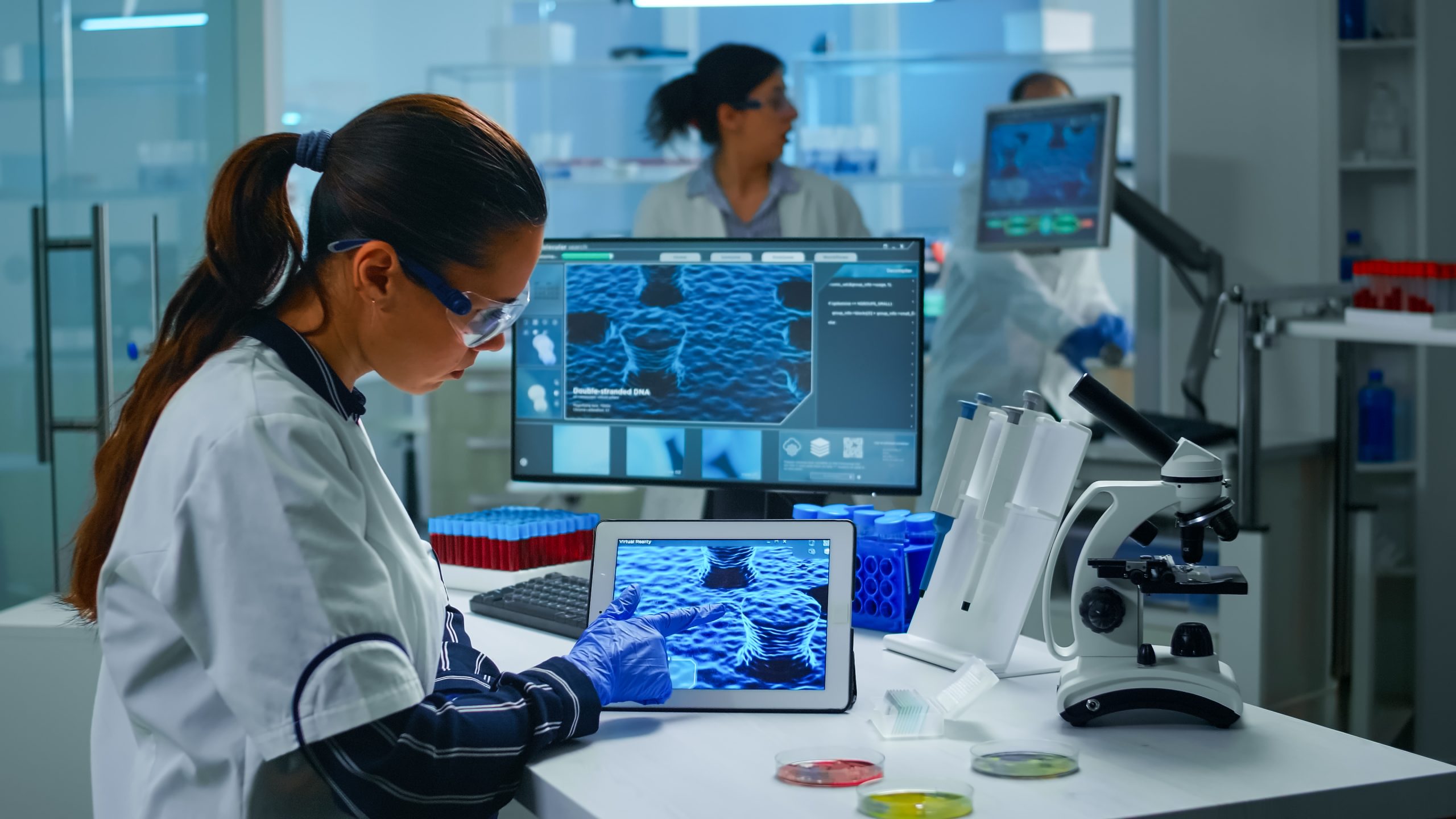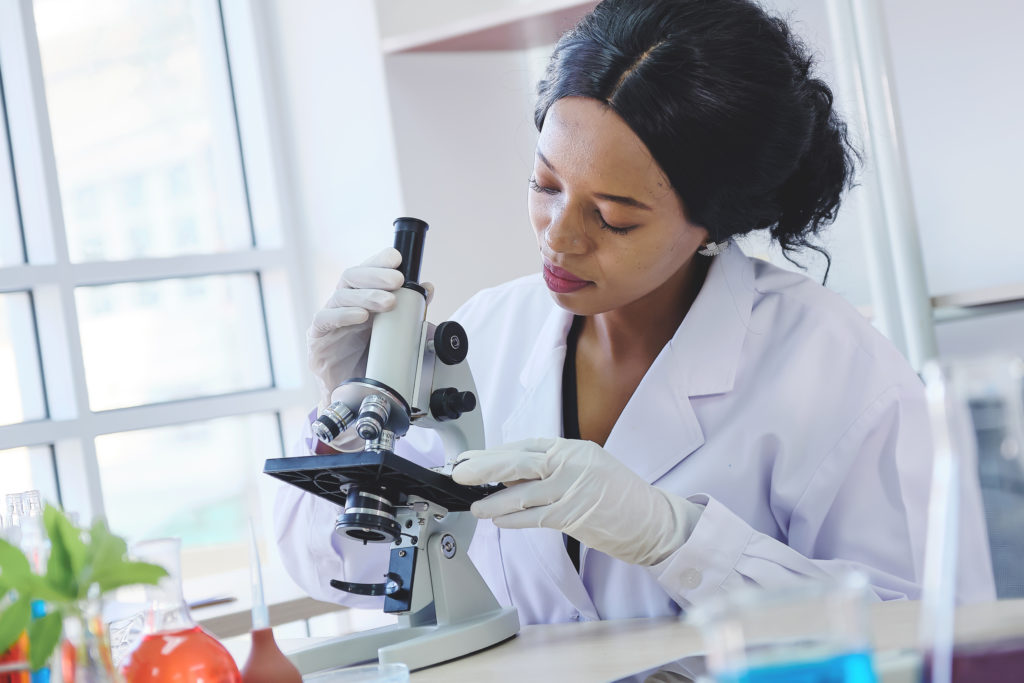
Women and girls represent about half of the world’s population and, in theory, half of its potential! While their contributions to science and technology have increasingly been recognised over the past centuries and recent decades, women and girls still represent a minority in the fields of Science, Technology, Engineering and Mathematics (STEM). Hence, there has been a growing recognition of the need to encourage and empower women and girls to pursue a career in the fields of STEM.
According to the UNESCO Institute for Statistics, less than 30% of the world’s researchers are women,[1] who, on average, publish less, win fewer grants and are significantly less likely than men to be credited with authorship on research papers.[2] When it comes to inventions, women also patent less than men,[3] and a study by the European Patent Office (EPO) found that only about 13% of named inventors in Europe are women,[4] with Chemistry standing out as the technology sector with the highest share of female inventors, while mechanical engineering has the lowest proportion. Yet, women’s share of patent applications and the number of teams with at least one female contributor has been increasing over the years.
Combined efforts are being made to break down barriers, challenge stereotypes and create a more inclusive environment. Initiatives like the International Day of Women and Girls in Science (IDWGIS), established by the United Nations, aim to highlight the achievements of women and girls in science and technology and promote their empowerment in STEM. This Sunday, the IDWGIS will be celebrated, focusing on ‘closing the gender gap in science’.[5]
While only a selected few can be named here, numerous women have contributed to scientific innovations. It is in that spirit that this article aims to pay homage to just some of the pioneering female innovators past and present.
Women have played major roles in advancing the fields of Chemistry and Physics. Marie Sklodowska–Curie (1867–1934) was the first and only woman to win two joint Nobel prizes: one in 1903 in recognition of her work on radiation, and one in 1911 for the discovery of radium and polonium. Notably, Curie never patented any of her inventions, including methods for isolating radioactive epitopes and ‘Little Curie’ mobile x-ray units.[6] [7] Like her mother,Irène Joliot-Curie (1897–1956) won a joint Nobel Prize for induced radioactivity. While making significant contributions, both Marie and Irène died of illnesses caused by years of radiation exposure.
Rosalind Franklin (1920–1958) and Lise Meitner (1878–1968) were two female scientists, ‘overlooked’ during their lifetime, who shaped the way we understand the intricacies of DNA structure and nuclear fission. Franklin used x-ray technology to generate images of DNA molecules, including the famous ‘photograph 51’,[8] used by Crick and Watson to build their DNA model. Meitner was a physicist who, together with Otto Hahn, was involved in the discovery of nuclear fission and even applied for a patent for the preparation of radiothorium (US1076141). While Meitner did not share the Nobel Prize with Hahn, she was nominated for the Nobel Prize 49 timesbut never won.[9]
Hedy Lamarr (1914–2000) was not only an actress but also an inventor and co-applicant for a patent entitled ‘Secret Communication System’ (US2292387A). Although awarded the patent in 1942 for her ‘frequency hopping’ invention, her system was not immediately implemented, and her patent expired before she could ever benefit financially from her invention. While most of her tributes were posthumous, her contribution has led her to be dubbed ‘Lady Bluetooth’ or ‘the mother of Wi-Fi’.
Collectively, Barbara McClintock, Emmanuelle Charpentier and Jennifer Doudna have made significant contributions to our understanding of genetics and molecular biology. McClintock made groundbreaking contributions when discovering ‘jumping genes’, or their ability to transpose, winning her the Nobel Prize in 1983 and making her the first woman to ever receive the prize unshared[10]. More recently, Nobel Prize laureates Charpentier and Doudna have transformed our understanding of and ability to edit the genetic code, using CRISPR-Cas9 gene editing technology.[11]
The power of scientific perseverance and innovation is also reflected in the recent work by Katalin Karikó, who studied ways in which to modify mRNA to make it more stable and less immunogenic.[12] Her work was instrumental in overcoming major obstacles in using mRNA as a therapeutic agent and played a pivotal role in developing mRNA-based COVID-19 vaccines.
While women and girls in STEM have historically been underrepresented, it is encouraging to see the efforts being made to address this issue and to breakdown gender stereotypes, often involving a combination of policy changes, workplace initiatives and awareness campaigns. Empowering women and girls, and generally creating a more inclusive environment, is not only a matter of social justice but also a necessity for advancing scientific knowledge and innovation.
[1]. UNESCO Institute for Statistics, Women in Science, (Fact Sheet No. 55, June 2019 FS/2019/SCI/55.
[2]. M.B. Ross, B.M.Glennon, R. Murciano-Goroff, et al., “Women are credited less in science than men.” Nature 608 (2022): 135–145, https://doi.org/10.1038/s41586-022-04966-w
[3]. J. Huanget al., “Historical Comparison of Gender Inequality in Scientific Careers Across Countries and Disciplines.” Proc. Natl Acad. Sci. USA. 117 (2020): 4609–4616.
[4]. European Patent Office, “Women’s Participation in Inventive Activity. Evidence From EPO Data”, November 2022. womens_participation_in_inventive_activity_2022_en.pdf (epo.org)
[5]. UNESCO, “Closing the Gender Gap in Science.” https://www.unesco.org/en/articles/closing-gender-gap-science-accelerating-action
[6]. Eva Hemmungs Wirtén, “The Patent and the Paper: A Few Thoughts on Late Modern Science and Intellectual Property.” Culture Unbound, Volume 7 (2015): 600-609.
[7]. Smithsonian Institution, “How Mary Curie Brought X-ray Machines to the Battlefield.” Smithsonian Magazine, (October 2017). https://www.smithsonianmag.com/history/how-marie-curie-brought-x-ray-machines-to-battlefield-180965240/
[8]. Jan Witkowski, “The Forgotten Scientists Who Paved the Way to the Double Helix.” Nature: Books and Arts, (2019), https://www.nature.com/articles/d41586-019-01176-9.
[9] https://www.businessinsider.com/lise-meitner-discovered-nuclear-fission-nominated-nobel-prize-never-won-2024-1?r=US&IR=T
[10] https://www.nobelprize.org/prizes/medicine/1983/summary/
[11] https://www.nobelprize.org/prizes/chemistry/2020/summary/
[12] https://www.nobelprize.org/prizes/medicine/2023/summary/


